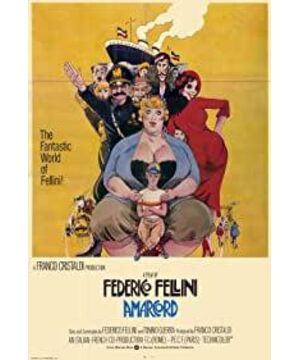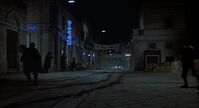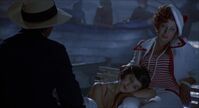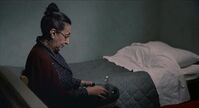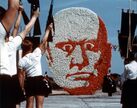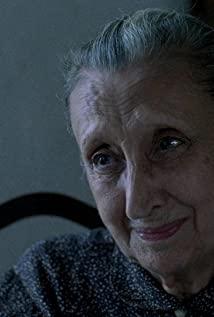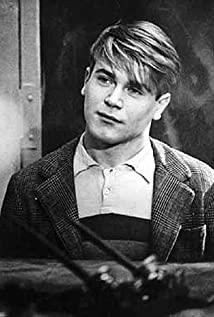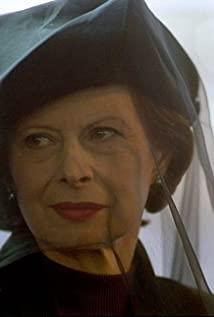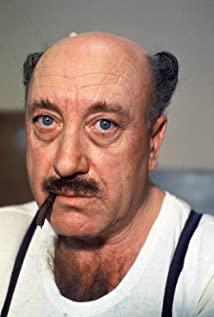Fellini's film works, why are they great and why they are closer to the essence of art? The richness and sufficiency of content is an important aspect. In terms of the content, connotation, image extension, and pronouns of the works, his works form a rich "art carrier" under the premise of being quite complete and autonomous. Fellini's works have comprehensive and complex features. The creator creates a finished product with sufficient analysis and comprehension through blending and the entire composition. This is the reason why many commentators keep repeating the keywords "youth", "memories", "small town" and "group image": this is similar to the basic tastes and ingredients such as "sweet, bitter and spicy"; for another type of taster , May be able to experience a more subtle taste.
Another aspect is the ambiguity and relationship between material and content. No matter how huge the work is, the content that can be accommodated or the materials that can be used is always limited, so the correlation and mutual response between the materials are more important, which can amplify and strengthen the effect of the creator's intention. At the same time, the meaning contained and contained in the material has sufficient ambiguity and appropriate implicitness, which can trigger a certain degree of "misunderstanding" and spontaneous interpretation of the audience, and guide the audience to trigger feelings. The time, composition, movement, and connection of the lens are all in order to ultimately guide the audience's experience.
In short, Fellini's works are based on certain artistic rules or experience, and the creator's intuition is meticulously completed with rich materials and techniques, but they can look unpretentious and outstanding. This state is really worthy of fun.
Back to this movie. Although the film does not have a complete storyline, it can still maintain the integrity of the work. This is because in the work, Fellini used a variety of film and drama techniques to maintain continuity. From the perspective of the movie itself, Fellini used classic and ingenious montages to connect and transition the shots, creating a continuity that is completely "atmosphere" rather than plot or visual; in the setting of the scene, slide Orbital shooting clearly explains the relationship between space and architecture, ensuring that the viewer recognizes the continuity of the background, and will rhythmically place a characteristic lens (such as the corridor of the harbor, the overlook of the square) to explain different passages The consistency of the spatial relationship between them; it is obvious that a setting is to set a commonly used role in a drama, and to achieve transition by connecting several main paragraph relationships in a direct way of narrating the camera. This setting breaks the fourth aspect. The tradition of the wall; the most important, of course, is the gentle use of juxtaposition, continuation, and contrast in the narrative structure of the drama, the suggestion of several main themes such as physicality and sexuality, the ridicule of politics and passion, tradition and The slutty contrast, the contrast between life and death, etc., are spontaneously searched by the viewer for these inner, strong or weak correspondences. Through these methods, this work can become a complete, consistent style, and delicately balanced group portrait work, just like a Renaissance group portrait oil painting, achieving perfection in all aspects such as the center of gravity, themes, and characters. harmonious.
In this film, an important element with very strong director characteristics is Fellini's inheritance and development of the Greek theater tradition: creating a balance of reality and absurdity in the theater. Watching how Fellini grasps the material and exerts his imagination is simply watching a creative artistic dance: in the realist scene, some seemingly accidental unrealistic factors are naturally introduced, and then gradually strengthened; in the audience After being slightly aware of this unreality, guide the audience to understand and accept this unreality; pay attention! Then he let go lightly, instead of blindly creating absurdity, drama, and conflict to express emotions, feelings and intentions. This sense of proportion is the exquisite handwork of the master. There are too many such scenarios, let me cite a few examples. First, the children wandered around the door of the closed hotel, everyone was telling stories and legends about the hotel; the wind blew over, and the trash on the ground was flying lightly. Here, the legends told are true and false (inconsistent with the information obtained by the audience in the previous story), and the audience accepts the typical self-narrative and imaginary narrative of children, which is the beginning of triggering the sense of unreality. After the middle shot explained the position and movement of the characters, the camera turned to rotate and reciprocate as it moved and followed the shooting. The music started, and the children danced as they imagined. This scene has changed from narrative to lyrical, and the sense of reality is superimposed with a dramatic mist, like a paper flipped in the wind, drifting. Second, in a thick fog, the old man walked out of his courtyard. In the thick fog, it was almost difficult to distinguish the buildings, roads and trees. The faintly visible outline of the house is the only familiar and real image (from the previous paragraph). The old man walked slowly in silence, lost his way, and said a very deep and magical line: Am I dead? What is the difference between this and death? There are no houses, trees, roads and wine. This sentence instantly elevated the entire scene to a scene with strong symbolic significance. At this moment, reality completely gave way to a sense of drama, a static moment in the plain narrative. After that, a carriage appeared in the fog, and the short conversation broke the stillness. The old man went home and was hidden in the fog, and the unreality also ended. The same fog is even more absurd in a child's play. The trees show sharp and hideous outlines, creating an atmosphere of horror and unknown, until a white cow comes out from behind the tree and blocks the way. So far, the dreamy atmosphere has been exerted to its fullest extent, and the whole paragraph is over. There are many such passages, such as the military parade in the classic mockery of Mussolini’s dictatorship, the shooting of a phonograph, and weddings where flowers and portraits are witnessed to the marriage. List them here
As mentioned above, Fellini’s calm display of the richness and completeness of his works, as well as his mastery in the balance between reality, imagination, and drama, are enough to prove that he is a well-deserved film master and the most consistent. An artist who "makes dreams" as defined by Bazin.
View more about Amarcord reviews


